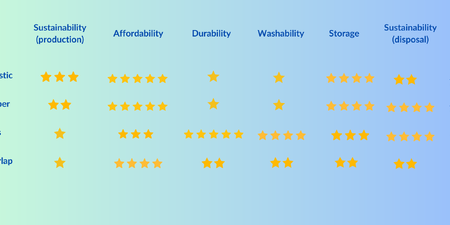
Kane County Recycles Rates the Reusable Bag - Series Part One
The first municipal single use checkout bag ordinance passed in Kane County will be going into effect in the City of Batavia on July 1. This means that large stores in Batavia, with over 5,000 square feet of retail space, will start charging 10 cents for each single use carryout bag. This fee will be applied to both plastic and paper bags given out at checkout, but does not apply to bags used to hold bulk food, bakery items, produce, flowers and potted plants. It also does not apply to bags used by restaurants and cafes. The goal of single use bag fees is to encourage customers to bring their own reusable bags to shop, which is the focus of the City's marketing connected to the ordinance.
In the run-up to the ordinance taking effect, the Kane County Recycling Program thought it would be useful to do some reusable bag reviews, because not all bags are created equal! This will be a series, and we will look at natural fiber bags, woven synthetic bags, and non-woven synthetic reusable bags. We will rate various types of bags on a number of factors, including their sustainability, durability, and how easy they are to wash and store. In all cases, 1 is a poor score, and 5 is the best. In each series, we will include our ratings for single use paper and plastic bags as a basis for comparison.
Without further ado, our ratings and reviews for natural fiber bags:
Cotton Canvas - Overall Score = 3.5/5
Cotton canvas bags, like the classic “NPR totebag" are sometimes viewed as icons of sustainability. They certainly can be, but there's a big caveat. It turns out, cotton canvas bags take a great deal of natural resources to produce, including water, fertilizer, pesticide and fuel. In the case of organic cotton, most pesticide use is exchanged for even more water and more organic-approved fertilizer. Cotton canvas bags take many thousand times more resources to make than single use bags - either paper or plastic. However, the results of all this are durable, machine-washable and relatively easy-to-store bags that can be used many, many times. If damaged, they are not too hard to patch up, and if beyond repair, they can be recycled as textile, and the material will eventually biodegrade. Our advice is to treat canvas totes as long-term reuse items and not to collect them in excess. If you reuse them for many years, they are a better choice than single use bags.
Lined Jute Burlap - Overall Score = 2/5
Unfortunately, this type of bag represents the worst of both worlds. They take a lot of resources to produce and, unlike a well-made canvas bag, lack the durability that ensures they actually can be reused for long enough to make up for it. On top of those flaws, they're tricky to wash (hand wipe only) and bulky to store. All burlap reusable bags we have encountered are lined with a thin layer of plastic. The reason for this is that burlap tends to have a coarser weave than cotton, so an unlined, single-layered burlap bag would be prone to dropping small items and would not be at all waterproof. However, the plastic lining is the Achilles heel here, because it tends to start flaking apart after only a year or so of regular use, as pictured. Hello microplastic pollution! Once the lining fails, large holes start to fray in the burlap around the corners of the bottom of the bags. Sadly, there's no ecofriendly way to dispose of bags like these either. Although burlap is biodegradable, the plastic lining is not and is not recyclable. We do not recommend these over single use bags.


